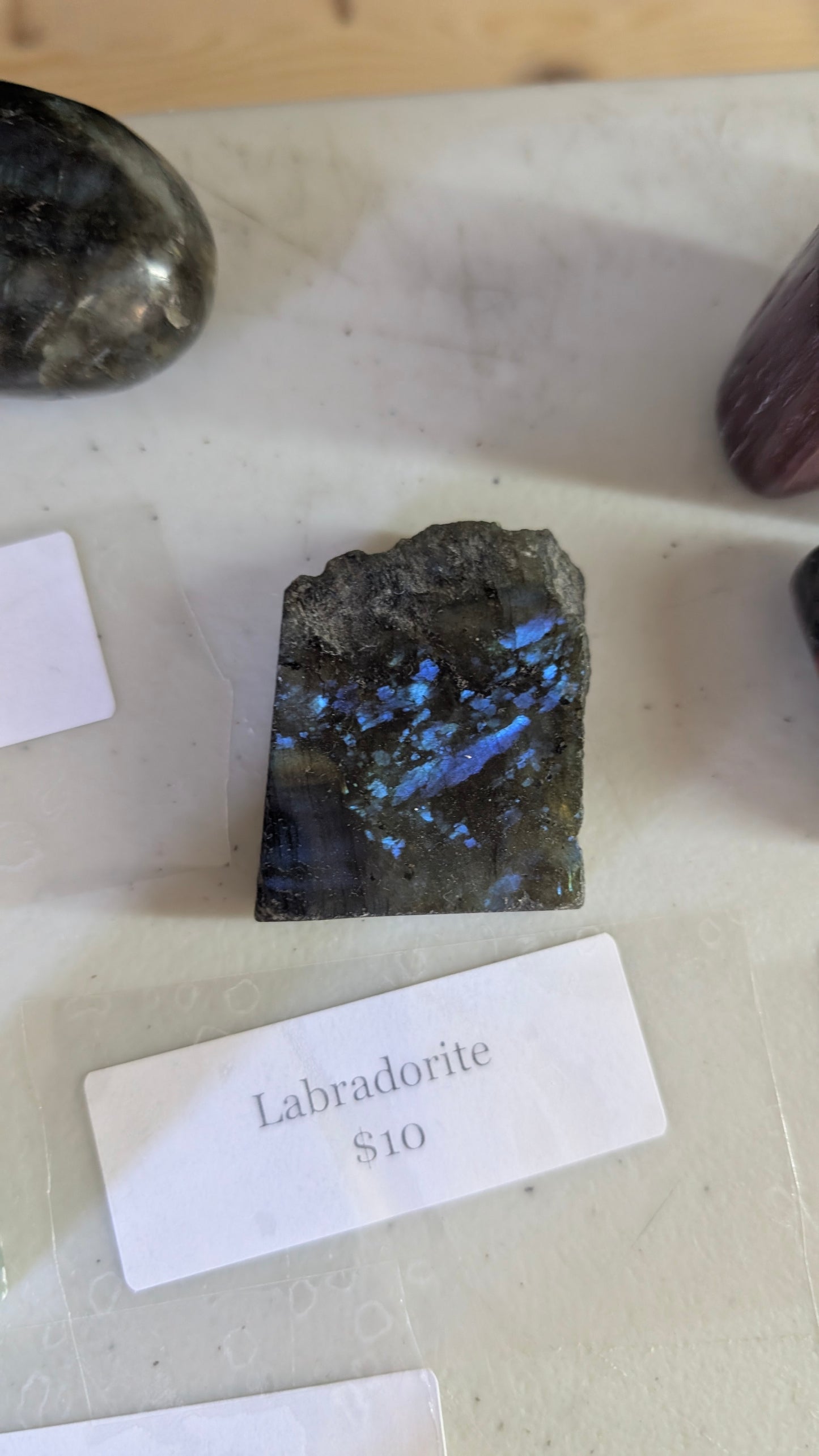My Store
Labradorite
Labradorite
Couldn't load pickup availability
A piece of labradorite slightly over 1" square.
--
Labradorite forms primarily through the slow cooling and crystallization of magma deep within the Earth's crust, a process that occurs in igneous rocks such as basalt, gabbro, norite, and anorthosite. This slow cooling allows for the development of large, well-formed crystals and is crucial for the formation of the microscopic structures responsible for its iridescent effect. As the magma cools, labradorite crystallizes at intermediate temperatures, typically after minerals like olivine and pyroxene but before amphiboles and orthoclase feldspar. The mineral belongs to the plagioclase feldspar group, with a chemical composition of (Na,Ca)₁₋₂Si₃₋₂O₈, where the ratio of sodium to calcium determines its specific composition within the series.
A key process in the formation of labradorite's distinctive optical property, labradorescence, is exsolution. This occurs after the initial crystal formation, where the crystal separates into alternating, extremely thin layers rich in sodium and calcium. These microscopic lamellae, or layers, are responsible for the interference and scattering of light, creating the shimmering, rainbow-like play of colors observed when the stone is viewed from different angles. This phenomenon is not due to surface reflection but to light interacting with these internal structures.
Labradorite can also form through metamorphic processes, where existing rocks, particularly those containing plagioclase feldspar, are transformed under high pressure and temperature conditions without melting. This can occur in deep burial environments or along tectonic plate boundaries, and such metamorphism can enhance the crystal size and quality of labradorite, sometimes leading to clearer and more well-defined crystals. In some cases, labradorite-bearing igneous rocks like anorthosite can metamorphose into gneiss, another source of labradorite, or be weathered into sediments where the mineral can be found.
Share


